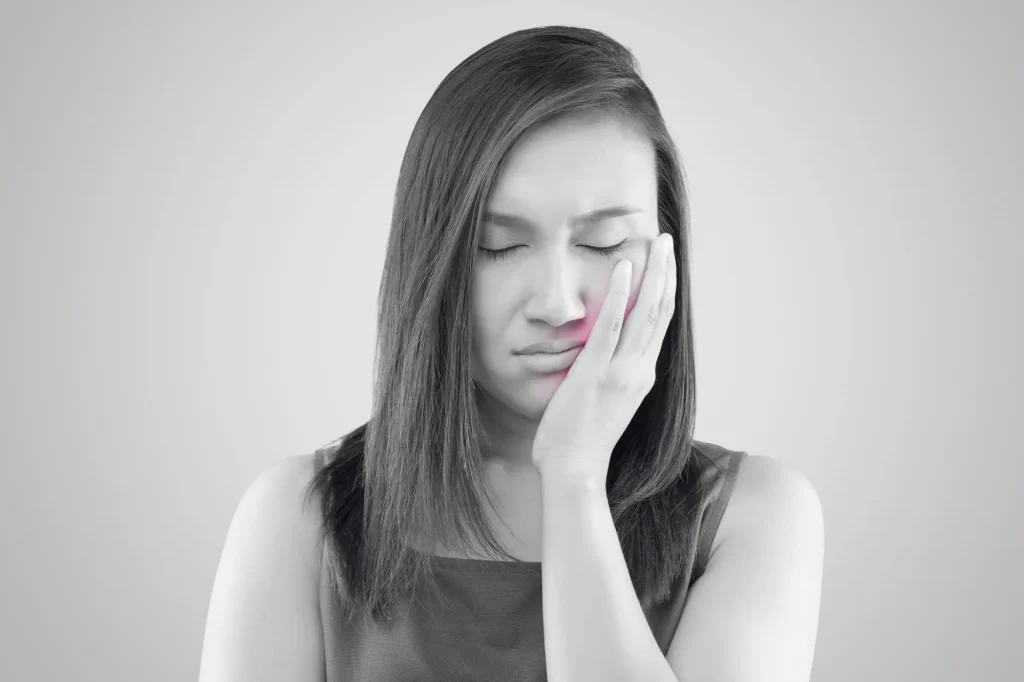Imagine waking up to a vivacious morning and being ready to take on the day when you begin to experience bleeding gums while brushing your teeth. Don’t worry; you’re not alone. Many of us have faced this discomfort, and it’s often a sign of a common oral health issue called gingivitis.
In this blog, we’ll unravel the mysteries of gingivitis, exploring its symptoms, dental treatment options, and prevention strategies. Plus, we’ll introduce you to Isdentbul, your partner in maintaining a healthy and radiant smile.
What Is Gingivitis?
Gingivitis, a term stemming from the Latin word gingiva, which means gums, denotes a common oral condition characterized by the inflammation of the gum tissue surrounding the teeth. It serves as the preliminary phase of periodontal disease, highlighting the significance of early detection and intervention.
Imagine your gums as the bodyguards of your teeth; they hold them in place and protect them from harm. Now, picture these bodyguards getting a little agitated, showing signs of redness, puffiness, and even bleeding when you brush. They are the early signs of gum disease, or gingivitis. But if not treated, it can become severe gum disease.
Gingivitis happens when plaque decides to settle on your teeth. When this plaque isn’t evicted with regular brushing and flossing, it starts playing mischief. It is one of the gingivitis causes. The gums get irritated, angry, and start bleeding when you brush or floss—gum disease symptoms.
The good news is that infected gum isn’t a permanent troublemaker. With some simple gingivitis treatment, you can show your gums some love and get them back on track. Stick around as we dive into the world of gingivitis—how to spot it, how to treat it, and most importantly, how to prevent it. Your gums will thank you with a healthier, happier smile!

What Are the Symptoms of Gingivitis?
Gingivitis, the initial stage of gum disease, has a way of making its presence known. Here are some common gingivitis symptoms:
Redness and Swelling: Healthy gums should be pale pink. If you notice them turning red and looking puffy, it’s a sign that something’s amiss.
Bleeding Gums: If you see a bit of blood when you brush or floss, your gums are sending a distress signal.
Tender Gums: Do your gums feel sore or tender to the touch? This discomfort can be a hint of gingivitis.
Bad Breath: Persistent gingivitis bad breath that doesn’t improve with regular oral care could be linked to gingivitis. Bacteria causing inflammation can lead to an unpleasant odor.
Receding Gum line: If you notice your gums pulling away from your teeth, revealing more of the tooth’s surface, it might be a sign of gingivitis.
Remember, spotting these signs of gingivitis early gives you a chance to take action and prevent gingivitis from progressing. Regular brushing, flossing, and professional dental checkups can help keep your gums healthy and your smile radiant.
The Role of Oral Hygiene in Preventing Gingivitis
Your gums are like the unsung heroes of your mouth, protecting your teeth and supporting your smile. But they need a little love and care from you to stay in top shape. Remember, gingivitis is like an uninvited guest, and your oral hygiene routine is the bouncer at the door. Consistent care and attention create a stronghold against gum inflammation, ensuring that your smile remains a picture of health and confidence.
Gingivitis in Children
Even pretty smiles need protection. Children can face gingivitis too, usually due to less-developed oral care habits. Encourage them to brush and floss properly, and supervise their oral care routines until they can do it effectively themselves. A balanced diet and regular dental visits set the stage for a lifelong, healthy smile.
Gingivitis in Adults
Adulting comes with responsibilities, including taking care of your oral health. Stress, certain medical conditions, and lifestyle factors can increase the risk of gingivitis. However, maintaining a solid oral care routine and attending regular dental checkups are your tools for keeping your gums and smile vibrant.
Pregnancy Gingivitis
Pregnancy brings its own set of changes, including potential gum sensitivity and inflammation. Hormonal shifts can make gums more susceptible to irritation. Extra care with brushing, flossing, and dental visits is crucial during this time against bleeding gums pregnancy symptoms. Your dentist can provide guidance tailored to your pregnancy journey for pregnancy gingivitis.
By embracing oral hygiene as a daily ritual, you’re setting the stage for healthier gums and a sparkling smile. Remember, it’s not just about teeth; it’s about nurturing the entire ecosystem that supports your confident grin.
How Do You Treat Gingivitis?
There are many gum disease causes. Let’s focus on the gingivitis cure. Facing gingivitis head-on requires a combination of consistent care and professional attention. Here’s a step-by-step guide on how to tackle this early stage of gum disease:
Ramp Up Your Oral Hygiene Routine: Start by brushing your teeth at least twice a day with fluoride toothpaste. Pay special attention to your gum line and the back of your mouth. Brush your tongue gently as well.
Embrace Flossing: Flossing might seem like a small step, but it’s a game-changer. Clean between your teeth and along the gumline daily to remove plaque that your toothbrush can’t reach.
Choose the Right Tools: Opt for a soft-bristle toothbrush and consider an electric toothbrush, which can provide a more thorough clean. For flossing, choose traditional floss or interdental brushes—whatever works best for you.
Antiseptic Mouthwash: Using an antiseptic or antimicrobial mouthwash can help reduce bacterial growth and control inflammation. Consult your dentist for recommendations.
Regular Dental Check-ups: Schedule routine dental visits, preferably every six months or as recommended by your dentist. Professional cleanings help remove plaque and tartar buildup, preventing further inflammation.
Personalized Treatment Plan: If your gingivitis is more advanced, your dentist might develop a personalized treatment plan. This could include additional cleanings, prescription mouthwashes, or other interventions tailored to your needs.
Improve Your Diet: A balanced diet rich in vitamins and minerals supports overall gum health. Vitamin C, for instance, is known to promote gum healing.
Quit Smoking: If you smoke, consider quitting. Smoking can exacerbate gum inflammation and hinder the healing process.
Remember, treating gingivitis requires commitment and patience. Consistency in your oral care routine, paired with professional guidance, will not only address the current inflammation but also lay the foundation for long-term gum health. Your efforts now can prevent more severe gum problems down the road.

Types of Gingivitis
Gingivitis, though commonly associated with gum inflammation, comes in different forms. In a nutshell, knowing these two types of gingivitis empowers you to recognize the sources of gum inflammation. Whether it’s a plaque party or other triggers, your dedication to oral health will keep your gums dancing to a healthier tune.
Let’s delve into the two main types:
Plaque-Induced
Picture your teeth as hosts for a never-ending party—a “plaque party.” Plaque, a sticky film containing bacteria, naturally forms on your teeth. If you don’t thoroughly remove this plaque through brushing and flossing, it can trigger inflammation in your gums.
Symptoms: Redness, swelling, and bleeding gums are typical signs of plaque-induced gingivitis. The good news? This type is the most common and also the most preventable.
Prevention: Regular and effective oral hygiene is your armor against plaque-induced gingivitis. Brushing, flossing, and professional dental cleanings can keep plaque under control and your gums healthy.
Non-Plaque-Induced
Sometimes, factors other than plaque can ignite gum inflammation. This type often arises from specific circumstances:
Hormonal Changes: Hormonal shifts during pregnancy, menstruation, or puberty can lead to gingivitis. It’s like your body is giving your gums a roller coaster ride.
Medical Conditions: Diseases like diabetes or certain immune disorders can make your gums more susceptible to inflammation, even with good oral hygiene.
Medications: Some medicines, such as antihypertensives or anti-seizure drugs, might cause gum changes that lead to gingivitis.
Symptoms: Non-plaque-induced gingivitis shares symptoms with its plaque-induced counterpart, including redness, swelling, and bleeding gums. However, it’s vital to consider the underlying factor causing this type.
Prevention: Managing your overall health and discussing medication-related effects with your healthcare provider can help prevent non-plaque-induced gingivitis.
Removing Plaque and Tartar
Imagine your teeth as a canvas on which bacteria throw an invisible party, creating plaque—a sticky film that clings to your pearly whites. Over time, if left unchecked, this plaque can transform into a more stubborn substance called tartar. Let’s unveil the steps to bid farewell to these unwelcome visitors:
1. Brushing and Flossing: The first line of defense starts with your trusty toothbrush and floss. Brush your teeth diligently, at least twice a day, using fluoride toothpaste. Flossing reaches those tight spots between teeth where plaque loves to hide.
2. Professional Dental Cleanings: Despite your best efforts, some plaque might still linger. That’s where your dental superhero comes in—the dental hygienist. Professional cleanings involve advanced tools that effectively remove both plaque and tartar from your teeth.
3. Scaling: Scaling is like a deep cleaning for your teeth. The hygienist uses special instruments to carefully remove tartar from above and below the gumline. This process helps halt gum inflammation and promote gum healing.
4. Root Planing: If tartar buildup has caused inflammation to reach below your gum line, root planing comes to the rescue. This technique smooths out the tooth roots to make it harder for tartar to stick, giving your gums a chance to recover.
5. Ultrasonic Devices: Some dental offices employ ultrasonic devices to break down tartar using high-frequency vibrations. It’s like sending vibrations to the party, making it easier to clean up.
6. Polishing: After the thorough cleanup, your teeth get a polishing treatment. This not only makes them feel smooth but also discourages plaque from returning too quickly.
7. Home Care Guidance: Your dental team is your guide on this journey. They’ll offer tailored advice on brushing techniques, flossing methods, and selecting the right oral care products for your unique needs.
Remember, keeping plaque and tartar at bay is an ongoing effort. Regular dental check-ups and cleanings, combined with your diligent oral care at home, create a strong defense against these unwanted guests. By making plaque and tartar unwelcome, you’re setting the stage for healthier gums and a radiant smile.
Professional Teeth Cleaning with Isdentbul
Gingivitis might be common, but it’s not invincible. Armed with knowledge about its symptoms, treatment, and prevention, you can take charge of your oral health journey. Remember, your smile deserves the best care, and Isdentbul is here to support you every step of the way.
Isdentbul is your partner in preserving your smile’s radiance with a wide range of services, including professional teeth cleaning. With expert dentists, state-of-the-art equipment, and a commitment to your oral health, Isdentbul offers professional teeth services that go beyond the surface, ensuring your gums stay healthy and your smile shines bright.








